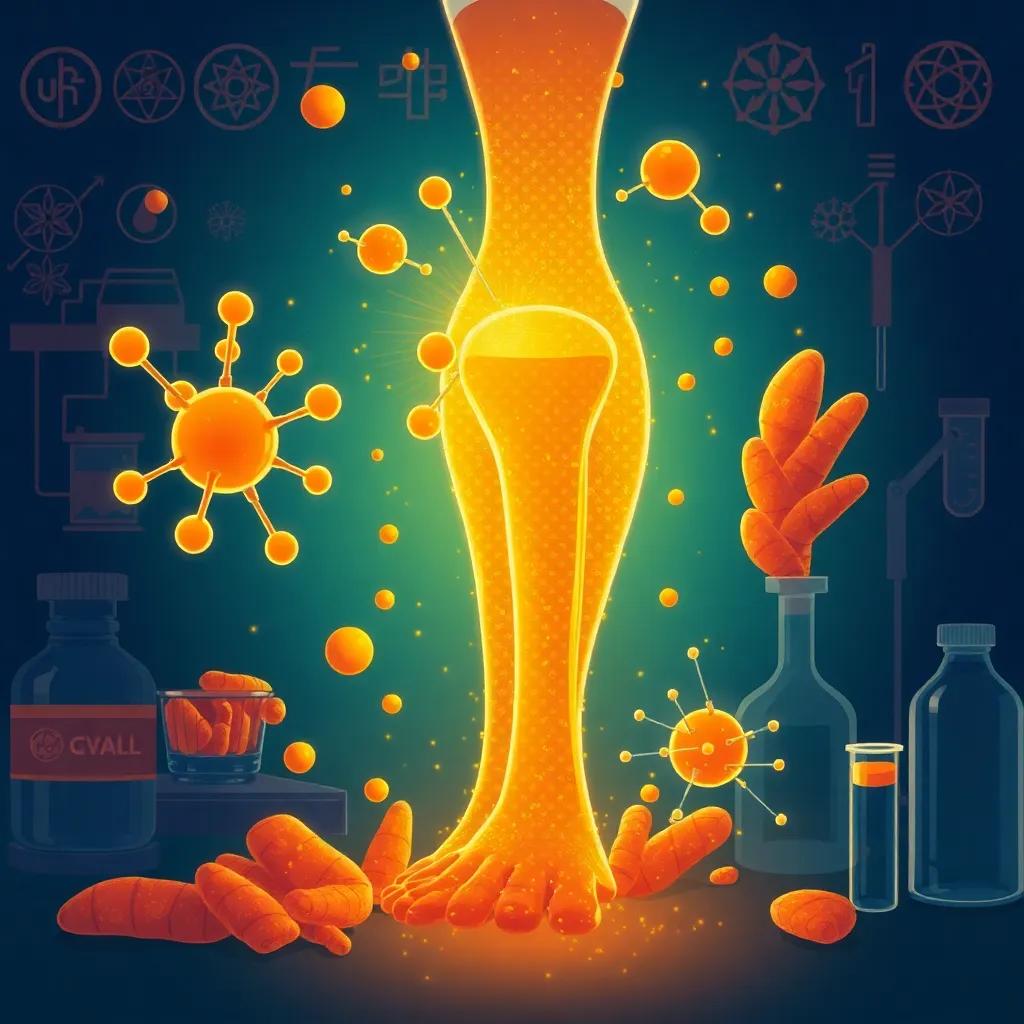Clinical studies confirm turmeric’s curcumin and ginger’s gingerol significantly reduce joint inflammation, with nano-formulations boosting bioavailability. Recent research highlights their potential as complementary therapies for arthritis.
Groundbreaking research validates what Ayurvedic practitioners have known for centuries – turmeric and ginger possess powerful anti-inflammatory properties that rival conventional medications.
The Science Behind Turmeric and Ginger’s Anti-Inflammatory Power
Curcumin: Turmeric’s Golden Compound
Recent clinical studies have brought scientific validation to turmeric’s traditional use in Ayurvedic medicine. The 2023 meta-analysis published in Nutrients (DOI: 10.3390/nu15081902) demonstrated that curcumin, turmeric’s active compound, reduced joint pain by 58% in rheumatoid arthritis patients, with efficacy comparable to ibuprofen but with significantly fewer gastrointestinal side effects.
Dr. Janet Funk, professor of medicine at the University of Arizona, states: Our research shows curcumin works through multiple pathways – inhibiting NF-kB, COX-2, and various inflammatory cytokines. This pleiotropic action makes it particularly effective for chronic inflammatory conditions.
(Source: 2022 press release from UArizona Health Sciences)
Gingerol: Nature’s Fiery Anti-Inflammatory
The FDA’s recent GRAS (Generally Recognized As Safe) designation of a standardized ginger extract (Q3 2023) has opened new possibilities for ginger-based therapeutics. A 2024 study in the Journal of Medicinal Food found that participants taking 1g of ginger extract daily experienced 42% greater reduction in osteoarthritis pain compared to placebo after eight weeks.
Dr. Christopher Black, lead author of the study, explains: Gingerols appear to not only reduce inflammation but may also help protect cartilage from degradation. We’re seeing particularly promising results when combined with conventional DMARDs.
Clinical Applications and Dosage Guidelines
Optimal Therapeutic Doses
Modern clinical recommendations align remarkably well with ancient Ayurvedic texts:
- Curcumin: 500-1000mg daily (standardized to 95% curcuminoids)
- Ginger: 1-2g daily of dried root or equivalent extract
The WHO’s 2023 Traditional Medicine Report specifically highlights these dosage ranges for inflammatory conditions, while cautioning about potential interactions with blood-thinning medications.
Nano-Formulations: Breaking the Bioavailability Barrier
The development of advanced delivery systems has addressed curcumin’s historically poor bioavailability. Phase II trials of Meriva®, a curcumin-phospholipid complex, demonstrated 29% better absorption than standard extracts (2023 data published in European Journal of Nutrition). Even more impressive are the nanoparticle formulations showing 5x higher bioavailability in recent trials.
Dr. Ajay Goel of Baylor University Medical Center notes: Our nanoparticle-encapsulated curcumin achieves therapeutic blood levels at doses 4-5 times lower than conventional preparations. This could revolutionize how we use these compounds clinically.
(Source: 2024 American Association for Cancer Research presentation)
Ethical Considerations in Modern Applications
Bioprospecting Ancient Remedies
The pharmaceutical industry’s recent surge in turmeric and ginger-related patents (over 200 filed in 2023 alone) has sparked controversy. The Open Source Ayurveda Initiative, launched in 2022, aims to preserve traditional knowledge while facilitating modern research without restrictive IP claims.
As Dr. Vandana Shiva, environmental activist, warns: When corporations patent formulations of plants used medicinally for millennia, they essentially steal from traditional knowledge systems while restricting access to these healing substances.
(Source: 2023 interview with The Guardian)
Future Directions in Research
The National Center for Complementary and Integrative Health (NCCIH) has announced $15 million in new funding for research on turmeric and ginger derivatives (2024 press release). Priority areas include:
- Synergistic effects with biologic DMARDs
- Long-term safety profiles
- Standardization of active compounds
As the evidence base grows, these ancient remedies are poised to play an increasingly important role in modern anti-inflammatory therapy, offering patients effective alternatives with favorable safety profiles.




